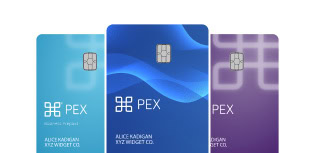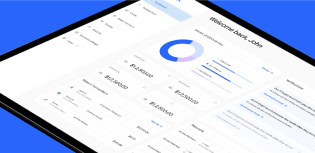How virtual cards can help control employee spending

Corporate employee spending has always been fraught with risk. Finance teams can create expense policies, train staff, and continually update them as the business changes. But historically, they’ve had zero visibility or control over employee spending, high fraud risks, and labor-intensive reconciliation efforts.
With traditional methods such as corporate credit cards or employee reimbursements, spending happens first. Employees then submit expense reports and finance staff only learn about spending after it takes place. That means no visibility into a possible budget overrun until it’s too late.
Intentionally or not, employees may violate expense policies with unapproved purchases or by going over budget. Traditional credit cards also carry inherent risks, like the potential for fraud or misuse – especially when shared across teams. And manual reimbursements and credit cards both require data entry, paper receipts, and credit card statements, making reconciliation cumbersome and prone to errors.
Enter a new option for spending: the virtual card.
What is a virtual card?
The idea of virtual cards first came about in the early 2000s, as the growth of ecommerce led to concerns about financial security. The first virtual cards were created as disposable or single-use cards that would automatically deactivate after use – eliminating the chance of fraud.
Virtual cards weren’t the only new options though. Ghost cards were in development as well. Ghost cards have the same structure – unique 16-digit number, no physical card – but they’re used differently, in that they are shared corporate card accounts that can be passed around the company.
Why the quick shift to virtual cards?
Virtual cards were available pre-pandemic, but not widely used. The working conditions created by the pandemic were the key driver in the rapid business adoption of virtual cards. With employees relegated to their homes, paper invoices and expense reports became nearly impossible to work with. Virtual cards allowed organizations to quickly access unique card numbers. Finance teams could pay vendors faster and ward off fraud in the turbulent environment of 2020.
As businesses moved beyond the pandemic, there was no going back to traditional credit cards. Virtual card adoption gained a ton of momentum in the last 4 years. According to Juniper Research’s Global Virtual Cards Market 2023-2028, there were 38.5 billion global virtual card transactions in 2023. The same report projects 174.3 billion global virtual card transactions by 2028.
What are virtual cards and how do they work?
We’re all familiar with traditional credit cards, where cardholders receive a physical card with one string of numbers that gets used repeatedly. A virtual card is a digital version of a credit card, where cardholders receive a unique 16-digit number linked to their main account.
The unique 16-digit number can be set to use per merchant, per transaction, or even for a period of time. The business in question can set the rules, so they have control over spending. And virtual cards can be generated immediately, so there’s no waiting for a physical card in the mail.
Virtual cards drastically reduce fraudulent purchases, as vendors don’t have access to one static card number that they can repeatedly charge. And virtual cards can be integrated into the finance team’s operations, reducing manual reconciliation work.
Key benefits of virtual cards for employee spending control
Virtual cards take the traditional spending workflow and reverse it. Instead of employee spending happening first and finance’s review & approval afterwards, virtual cards allow finance teams to set customized spending rules upfront – rather than having to backtrack after spending is already complete.
Because virtual cards are issued for specific merchants or timeframes, for example, they can only be used for that purpose. Merchants might attempt to double-bill for a project, or an employee might try to use the corporate card outside his or her travel window. With virtual cards, these spending rules prevent fraud and increase security.
The digital nature of virtual cards also makes it easier to integrate them into accounting, enterprise resource planning (ERP), and expense management systems. This integration reduces manual work associated with reconciliation.
Use cases for virtual cards
1. Corporate employee travel
With a traditional corporate card, road warriors are constantly at risk of overspending. Between car rentals, hotel rooms, meals, and the like, there are plenty of opportunities to go over – or even have your card swiped by a fraudster. Instead, companies can issue virtual cards with pre-set spending limits for employees traveling on business, ensuring they stay within budget. The unique virtual card number can be deactivated after a trip, reducing the risk of fraud as well.
2. Managing vendor payments
Companies with hundreds of invoices to process every month spend a great deal of time on vendor payments. There also are time-consuming email inquiries from vendors, time spent processing payments, and reconciliation. Virtual cards can be created at the beginning of a vendor relationship with a pre-set payment schedule, putting the payment process on autopilot. And with a unique virtual card number per vendor, the risk of fraud drastically drops off.
3. Subscription management
A large expense for many businesses is the number of recurring software subscriptions used by employees. Having a dedicated virtual card number per software subscription allows finance teams to more easily track expenses and gain insight into spend. It’s also much easier to cancel one virtual card for a subscription when services are no longer needed, rather than using the same corporate credit card for all subscriptions where cancellation of that card would cut off all subscriptions.
How PEX’s virtual cards simplify expense management and reconciliation
PEX’s expense management platform allows administrators to create virtual cards per merchant, employee, timeframe, etc., depending on the organization’s needs. Each virtual card comes with a unique 16-digit number.
Admins control how much can be spent on each virtual card. They can instantly set up, fund, and use virtual cards in the PEX platform – no waiting for the physical card in the mail. And if needed, admins can freeze and/or delete individual virtual cards.
Virtual cards provide finance teams with customizable spending limits, and the ability to set predefined limits for each employee, team, or department. These limits ensure that spending stays within the approved budget.
Using virtual cards in the PEX platform allows for real-time expense tracking. Companies gain instant visibility into employee purchases, allowing for better oversight and quicker intervention if needed.
Virtual cards can be issued for specific purposes and deactivated immediately after using, reducing the chances of unauthorized spending. Virtual card numbers are unique and pre-programmed with spending limits, increasing fraud prevention and security.
PEX also syncs with major ERP systems (e.g., Sage Intacct, QuickBooks, Netsuite), making it easier to track, categorize, and reconcile expenses. These data connections also offer centralized oversight into the financial health of the business.
Virtual cards offer more than just convenience
At first, the benefit of virtual cards versus traditional credit cards might seem pretty simplistic. They provide the same function as a traditional credit card, but you get access to them much faster – there’s no waiting in the mail for that physical card. And once the terms of the virtual card are up, it gets deactivated – making it really difficult for fraudsters to use.
However, virtual cards provide a whole host of benefits beyond convenience. They offer CFOs the opportunity to create spending controls for employees, which eliminates the risk of going over budget or over spending. The unique 16-digit number for each transaction or merchant, combined with the ability to deactivate virtual cards immediately and/or automatically, drastically reduces instances of fraud. And the digitization of virtual cards allows for spending visibility in real time and seamless integration with critical finance platforms, slashing the amount of time spent on reconciliation.
Learn more about the unique virtual cards available in PEX’s expense management platform. Schedule a customized demo today.
Similar resources
Opinions, advice, services, or other information or content expressed or contributed here by customers, users, or others, are those of the respective author(s) or contributor(s) and do not necessarily state or reflect those of The Bancorp Bank, N.A. (“Bank”). Bank is not responsible for the accuracy of any content provided by author(s) or contributor(s).











